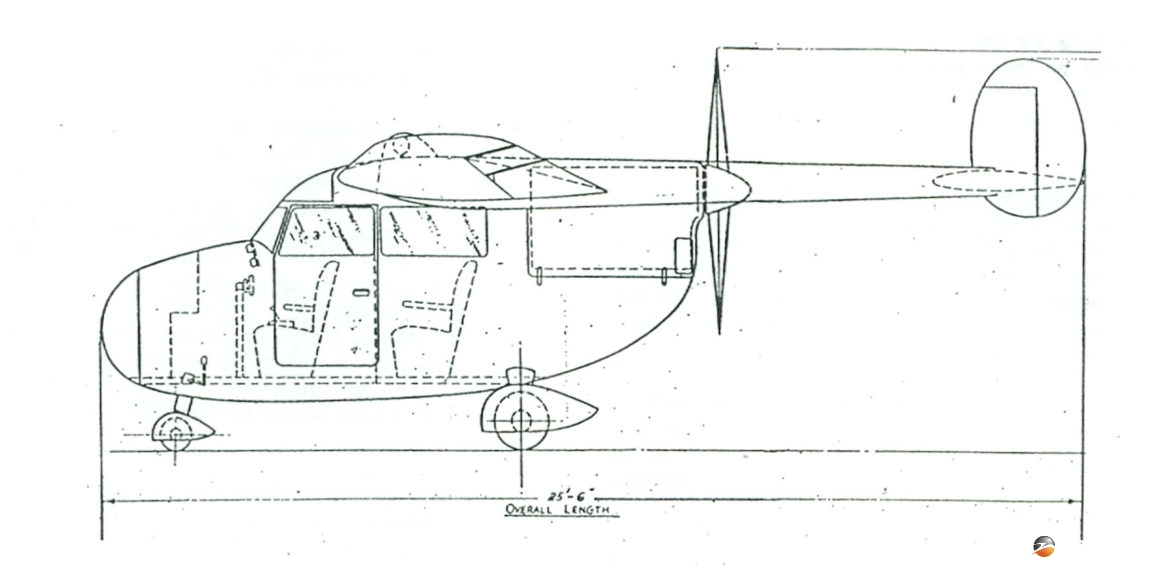Photograph:
Drawing of the proposed Beauford Division EC-1 (Denis O’Brien)
Country of origin:
Australia
Description:
Four-seat cabin monoplane
Power Plant:
One 108 kw (145 hp) de Havilland Gipsy Major in-line, inverted, air-cooled engine
Specifications:
- Wingspan: 13.1 m (43 ft)
- Length: 7.77 m (25 ft 6 in)
- Cruising speed: 232 km/h (144 mph)
- Stalling speed:83 km/h (52 mph)
- Rate of climb: 229 m/min (750 ft/min)
- Range: 805 km (500 miles)
History:
The EC-1 was a light aircraft which emanated from the Beaufort Division of the Department of Aircraft Production in October 1945 and was a proposal for the design and production of a four-seat light aircraft using knowledge gained during the production of the Bristol Beaufort bomber during World War II. The Director of the Division was John Storey and he recommended the design proceed to utilise experience gained up to that time pending the commencement of production of the Avro Lincoln bomber for the RAAF. It was envisaged six engineers, along with part-time assistance from other members of the Engineering Department, would construct a full-scale wooden fuselage and that wind-tunnel tests would be conducted by the Council for Scientific and Industrial Research (CSIRO).
The proposed aircraft was a single engine, four-seat aircraft with a pusher engine at the rear of the fuselage featuring a twin-boom configuration, a fixed tricycle undercarriage and utilising spare de Havilland Tiger Moth wheels. The engine chosen was the Gipsy Major unit which had been in production by General Motors Holden for the Australian-built de Havilland DH.82 Tiger Moth then in service with the RAAF. The wings were to be able to be folded for hangarage or storage in a garage.
However, like many promising designs which have been announced in Australia over the years, the EC-1 was not proceeded with and it is not known at this stage just how far the design team went with construction of a mock-up of the fuselage and a model for wind-tunnel testing.

